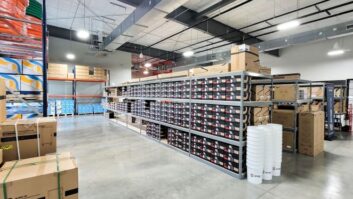
Following the company’s decision to split from Logitech, we interviewed Lifesize CEO Craig Malloy, via Lifesize Cloud, about the company’s 12-year history, in particular the time spent over the last two years reinventing its entire product line for independence and the brave new world of cloud-based services.
How has your approach changed from the early days as a startup to now as a newly independent company?
It’s very difficult to go back. When you start a company it grows organically and there’s lots of enthusiasm about the growth on the way up. But starting with a global $150m revenue run rate company, with 500+ people, and having to reinvent that is a more difficult task because of the disruption, the emotion and the culture change.
Many good people who’ve given many years of their career to Lifesize were asked to leave (the company has downsized from 550 to 250 employees). Often it’s harder to change and go back then it is to start fresh with a brand new company. It’s been the most challenging thing I’ve ever done in my professional career.
How does being owned by a company like Logitech change things on a day-to-day basis?
I will say that the priorities when you’re owned by a large operating company are generally different than the priorities of a venture capital firm that is really interested in growth.
There are pros and cons to each approach, Logitech had been very supportive of our transition from the old world to the new. We posted some operating losses along the way because of the product transition as the old infrastructure business got wiped away and the new cloud business stood up, it was a little but unpredictable.
Was your decision to leave in 2012, before returning in 2014, due to be the company being acquired by Logitech in 2009?
I’m an entrepreneur at heart and when we got bought by a large global company, that’s not really what I wanted to do. I stayed for a couple of years and we’d actually doubled the size of the business again, and then I wanted to go and start another business.
Then the market started to change and Lifesize started to struggle a little bit. When the opportunity came up to come back and reinvent the company, and potentially spin it out, that was very appealing. That appealed to my entrepreneurial instinct as well as my love for the company. Kind of like when one of your adult children gets into trouble you need to go help them. I felt an obligation and a calling to come back and help fix it knowing there would be an opportunity to spin it out later on if we were successful.
Has being part of Logitech over the last few years changed your attitude to acquisitions?
I’ve started two companies that have been purchased, one by Polycom and one by Logitech. When we started both those companies, our goal was, and still is today, to build a large standalone, market-leading company.
The smart businessman needs to be pragmatic and think about what is the best thing for, not only the investors in the company, but the employees who’ve put their livelihood in the hands of this company. And both times on balance an acquisition for cash was a better outcome at the time given the risks and rewards in both directions.
I think again here our philosophy will be, we’re going to try to build the best company we can for the next 5-7 years.
In the last couple of years the market has really shifted more towards a user-friendly focus.
Absolutely, the standard are things like FaceTime and Skype on your mobile device. And that’s actually been the driver of an increased awareness and demand for video communications because everybody has multiple ways of making video calls on their mobile device or their laptop.
I think you’re seeing that trend across all kinds of business applications, and business applications can’t have a lower standard of user experience than consumer applications anymore. That is a big focus of our efforts, to deliver a consumer-like experience but with business class capability, features, support and security.
Honestly, that was a big change for Lifesize. Eight years ago when we were developing infrastructure products for the corporate data centre, user experience was not high on our to-do list. But now, we’re building products for people where our mobile app sits right next to Skype on their phone so it’s got to be just as good if not better.
What do you think is a bigger driver of company’s investment in VC – greater workforce productivity or potential cost savings?
That’s been a big debate in video communications for many years. It used to be about saving costs on travel.
But I think a lot if the rationale and the desire for video communication now, even in businesses is for employee engagement. And there are lots of studies that say employee engagement drives increased productivity, and increased commitment to the company.
How different is the market now there’s been an influx of smaller software-based companies?
The competitive set has really been fascinating because I had the continuity being here from day one in 2003 to now.
Even as recently as two years ago, almost every deal with any company of any size, we competed against Polycom and Cisco. And now since we’ve completely changed our entire product line to our cloud service and our connected endpoints, we almost never see those guys!
The competition we see now are GoToMeeting, WebEx, and audio conferencing. It’s been fascinating to see how the competitive landscape has changed so dramatically since we started our cloud-based delivery model.
I think we’ve got some real advantages there. We brought forward our expertise in conference room cameras, and conference rooms in businesses still matter. We now have the best of both worlds, we have a fantastic cloud-based service, conference room devices, and we’ve also got a 12-year operating history as a global company. We brought some advantages from the old world with us but have fully shifted over to the new world of cloud-based service delivery.







